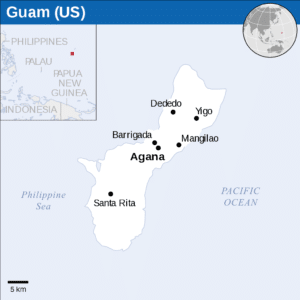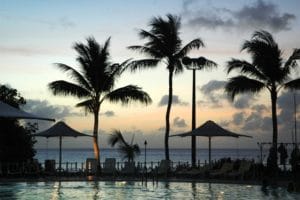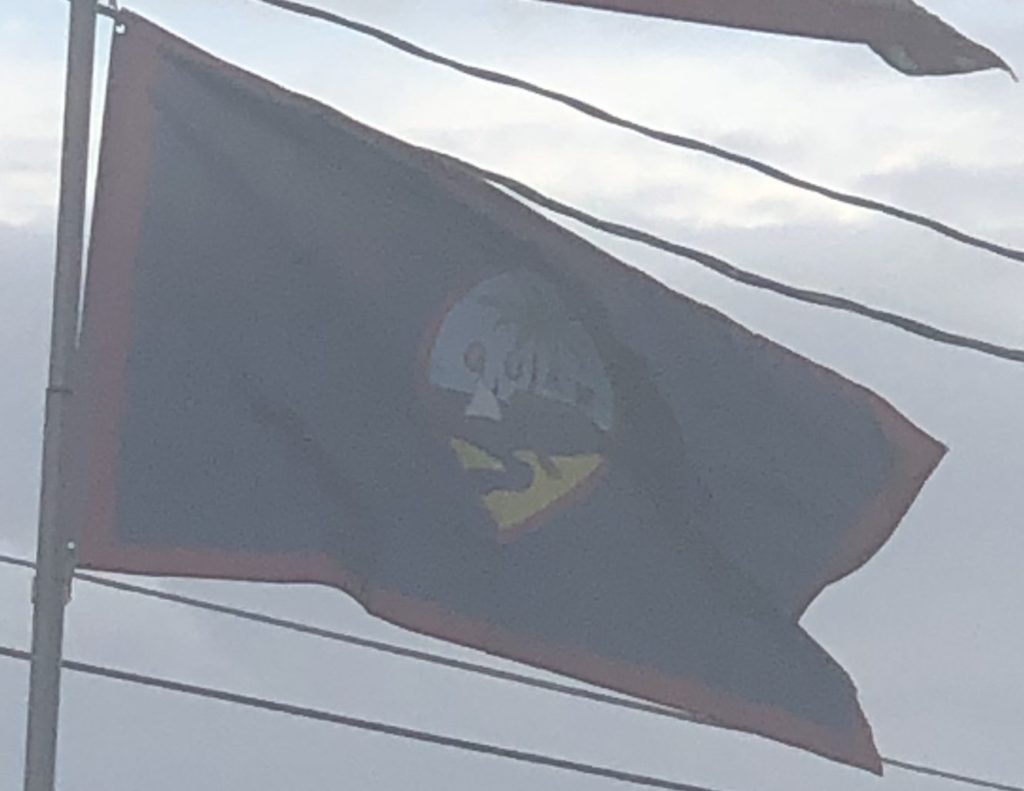
A coral table reef surrounds most of Guam, and the limestone plateau provides the source for most of the island’s fresh water. Steep coastal cliffs dominate the north, while mountains inform the topography of the island’s southern end; lower hills typify the area in between.
Economy:
Guam’s economy depends primarily on tourism, Department of Defense installations and locally owned businesses. Despite paying no income or excise tax, it receives large transfer payments from the general revenues of the U.S. federal treasury. Under the provisions of a special law by Congress, it is Guam’s treasury rather than the U.S. treasury that receives the federal income taxes paid by local taxpayers (including military and civilian federal employees assigned to Guam).
Lying in the western Pacific, Guam is a popular destination for Japanese tourists. Its tourist hub, Tumon, features over 20 large hotels, a Duty Free Shoppers Galleria, Pleasure Island district, indoor aquarium, Sandcastle Las Vegas–styled shows and other shopping and entertainment venues. It is a relatively short flight from Asia or Australia compared to Hawaii, with hotels and seven public golf courses accommodating over a million tourists per year. Although 75% of the tourists are Japanese, Guam receives a sizable number of tourists from South Korea, the U.S., the Philippines, and Taiwan. Significant sources of revenue include duty-free designer shopping outlets, and the American-style malls: Micronesia Mall, Guam Premier Outlets, the Agana Shopping Center, and the world’s largest Kmart.

The economy had been stable since 2000 due to increased tourism. It is expected to stabilize with the transfer of U.S. Marine Corps’ 3rd Marine Expeditionary Force, currently in Okinawa, Japan, (approximately 8,000 Marines, along with their 10,000 dependents), to Guam between 2010 and 2015.
The Compacts of Free Association between the United States, the Federated States of Micronesia, the Republic of the Marshall Islands and the Republic of Palau accorded the former entities of the Trust Territory of the Pacific Islands a political status of “free association” with the United States. The Compacts give citizens of these island nations generally no restrictions to reside in the United States (also its territories), and many were attracted to Guam due to its proximity, environmental, and cultural familiarity. Over the years, it was claimed by some in Guam that the territory has had to bear the brunt of this agreement in the form of public assistance programs and public education for those from the regions involved, and the federal government should compensate the states and territories affected by this type of migration. Over the years, Congress had appropriated “Compact Impact” aids to Guam, the Northern Mariana Islands and Hawaii, and eventually this appropriation was written into each renewed Compact. Some, however, continue to claim the compensation is not enough or that the distribution of actual compensation received is significantly disproportionate.
As of 2008 Guam’s largest single private sector employer, with about 1,400 jobs, was Continental Micronesia, a subsidiary of Continental Airlines; it is now a part of United Airlines, a subsidiary of Chicago-based United Continental Holdings, Inc. As of 2008 the Continental Micronesia annual payroll in Guam was $90 million.
Transportation:
The Commercial Port of Guam is the island’s lifeline because most products must be shipped into Guam for consumers.
